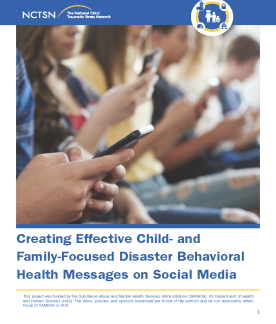
Creating Effective Child- and Family-Focused Disaster Behavioral Health Messages on Social Media
Offers guidance to child-serving behavioral health organizations and professionals who serve communities affected by disaster and terrorism events.
The following resources on child trauma were developed by the NCTSN. To find a specific topic or resource, enter keywords in the search box, or filter by resource type, trauma type, language, or audience.

Offers guidance to child-serving behavioral health organizations and professionals who serve communities affected by disaster and terrorism events.
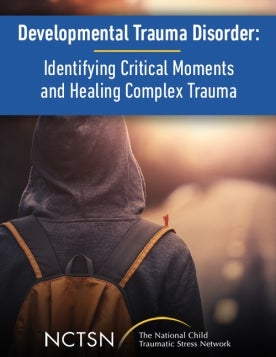
Demonstrates approaches therapists can take to help adolescents feel more invested in the family therapy process. Often, adolescents may feel heard but not listened to in their family environment.

Provides mental health clinicians and professional interpreters with information about a trauma-informed approach to mental health interpretation that is socio-culturally and linguistically- responsive to the needs of children and families receiving services.
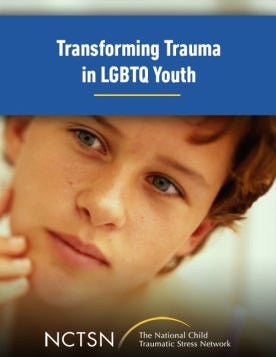
Discusses how professionals can recognize qualities of a safe, affirming environment where staff can explore personal views and values, and articulate professional responsibilities.
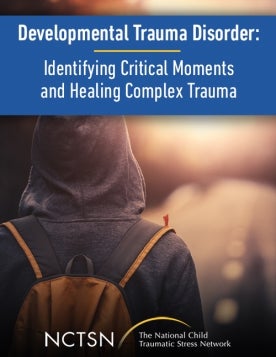
Discusses the intersection of complex trauma, development, and culture creates a foundation for effective case planning, treatment, and intervention.
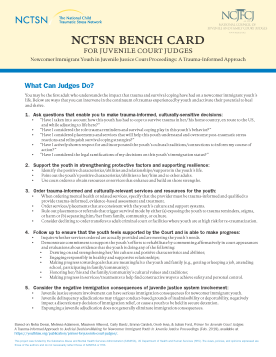
Provides judges with information they need to know about newcomer immigrant youth and trauma. This bench card offers useful questions and guidelines to help make decisions based on the specific needs of newcomer immigrant youth.
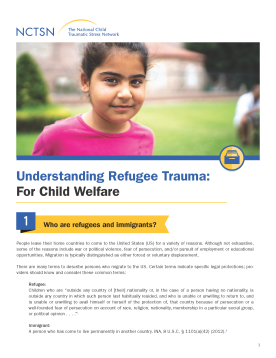
Provides information about refugee trauma for those working in or with the child welfare system.
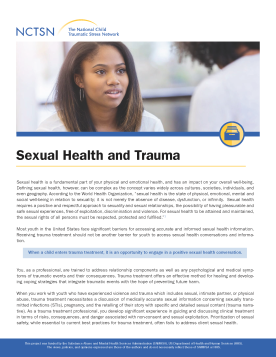
Provides information about sexual health to providers. This fact sheet discusses what sexual health is, the challenges providers face when talking about sexual health, sexual health principles, as well as how trauma impacts sexual health conversations.
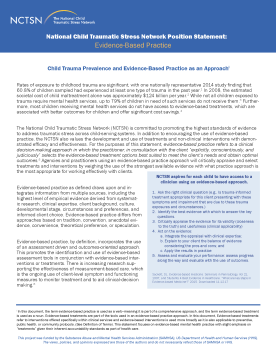
Illustrates the NCTSN’s commitment to the principle and use of clinical treatments for children and adults who have experienced traumatic events that have undergone the rigor of scientific investigation and are consistent with the ethical responsibilities of clinical practice within the NCTSN.
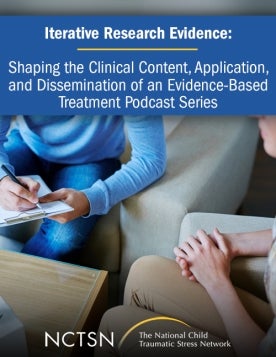
Describes a few dismantling studies and the aspects of CPT being tested. She then explains how findings from these studies changed CPT.

Discusses the process of dissemination and the challenges of dissemination, training, and delivery.
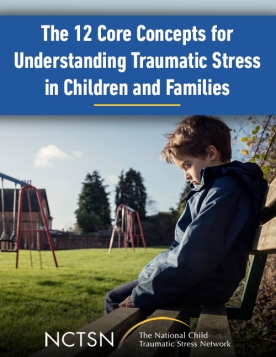
Offers information about how to work with children and use a developmental lens.